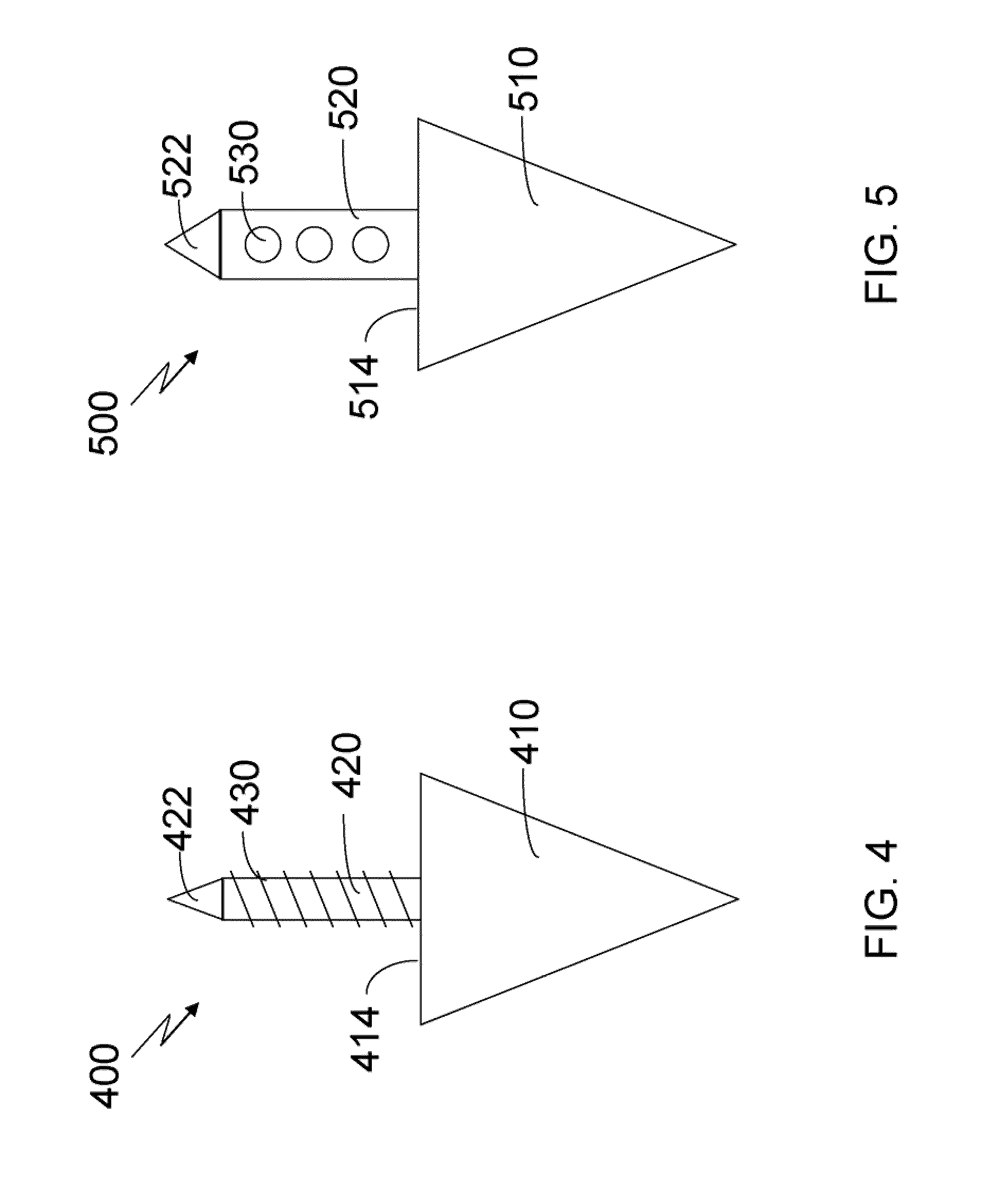Implants and methods for performing gums and bone augmentation and preservation
a technology of gums and bone augmentation and implants, applied in the field of implants and methods for dental surgery, can solve the problems of atrophic alveolar ridges that cannot securely support dentures, poor oral health of individuals, and atrophic jaw bones over time, so as to facilitate bone formation (preservation), facilitate regrowth of gums, and facilitate uni- or bi-directional cellular growth
- Summary
- Abstract
- Description
- Claims
- Application Information
AI Technical Summary
Benefits of technology
Problems solved by technology
Method used
Image
Examples
Embodiment Construction
[0019]Embodiments discussed herein provide apparatus and methods for preserving and augmenting bone growth particularly well suited for decreasing alveolar ridge deterioration, enhancing support of a prosthesis, and regrowing gum tissue at the gum line in the area of the dental papilla. In the following description, numerous specific details are set forth, such as material types, dimensions, specific tissues, etc., in order to provide a thorough understanding of the present embodiments. Practitioners having ordinary skill in the biomedical arts will understand that the various embodiments described herein may be practiced without many of these details. In other instances, well-known devices, methods, and biochemical processes have not been described in detail to avoid obscuring the claimed embodiments.
[0020]As described above, in a phenomenon known as “black triangle disease,” the portion of the gum line known as the papilla may become damaged leaving large spaces between the teeth....
PUM
| Property | Measurement | Unit |
|---|---|---|
| Structure | aaaaa | aaaaa |
| Viscosity | aaaaa | aaaaa |
| Adhesion strength | aaaaa | aaaaa |
Abstract
Description
Claims
Application Information
 Login to View More
Login to View More - R&D
- Intellectual Property
- Life Sciences
- Materials
- Tech Scout
- Unparalleled Data Quality
- Higher Quality Content
- 60% Fewer Hallucinations
Browse by: Latest US Patents, China's latest patents, Technical Efficacy Thesaurus, Application Domain, Technology Topic, Popular Technical Reports.
© 2025 PatSnap. All rights reserved.Legal|Privacy policy|Modern Slavery Act Transparency Statement|Sitemap|About US| Contact US: help@patsnap.com



